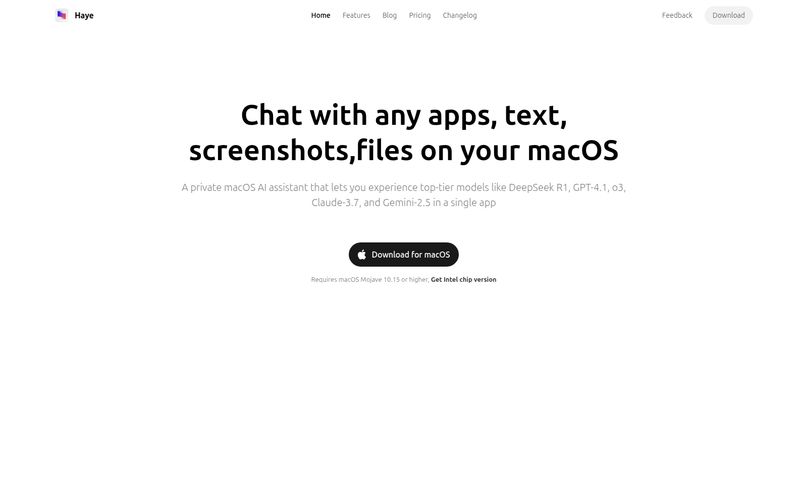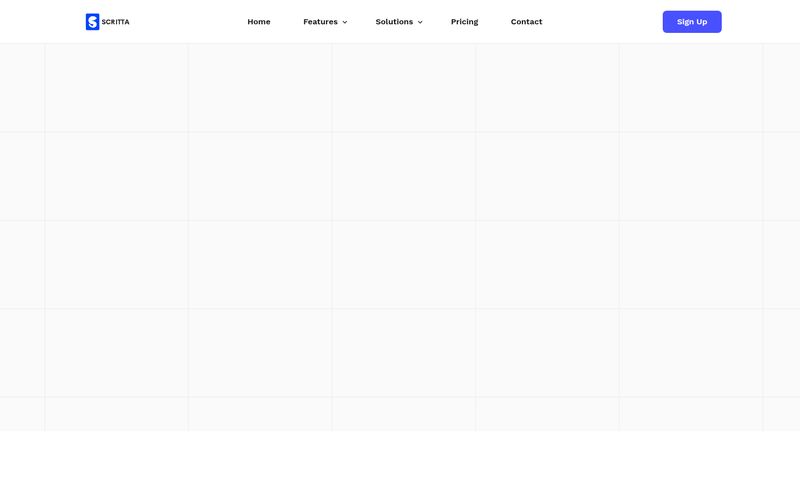If you're in the AI or machine learning space, your browser tabs are probably a nightmare. Mine certainly are. One tab for Arxiv's new daily papers, another for a dense PDF you've been meaning to finish for a week, and about fifteen others with half-forgotten Google searches like "explain ELU activation function like I'm five." It’s a constant, overwhelming firehose of information. I’ve been in this SEO and trends game for years, and I've seen information overload in many industries, but the AI field is... something else entirely. It’s like trying to take a sip of water from a fire hydrant.
So when a new tool pops up with a cute little dinosaur logo promising to help manage this chaos, my curiosity is definitely piqued. I'm talking about Cambrian. The name itself is clever, hinting at the "Cambrian explosion" of life—a perfect metaphor for the current boom in AI development. But a clever name and a nice logo only get you so far. The real question is, can it actually help us navigate this wild new research landscape?

Visit Cambrian
So What Exactly is Cambrian?
At its heart, Cambrian is a platform built for the people in the trenches: the researchers, the grad students, and the ML engineers who need to stay on the cutting edge without losing their minds. It's not just another PDF reader. It’s an integrated environment designed to help you discover, understand, and even share AI research more effectively. Think of it as part search engine, part study buddy, and part digital librarian.
The whole idea is to tackle the sheer volume. The platform boasts a searchable database of over 240,000 machine learning papers, primarily sourced from Arxiv. With the rollout of what they're calling Cambrian 2.0, they've added a bunch of new tools like folders, chat functions, and social features, moving it from a simple discovery tool to a more complete research hub.
Diving Into the Cambrian Toolkit
A tool is only as good as its features, right? So let’s break down what Cambrian actually puts on the table. It’s more than just a search bar, though it starts there.
More Than Just a Search Bar
The search functionality is the gateway. Being able to sift through a quarter-million papers is a solid start. I noticed a little message on their site that said, "This may be slow for first use, thanks." And honestly? I appreciate that kind of transparency. It tells me they're actively developing and aware of the user experience, not just pretending everything is flawless from day one. It gives the tool a bit of a human, indie feel which I kind of like.
The 'Chat with a Paper' Revolution
This is where things get really interesting. Cambrian has a "chat-w-paper" feature. The potential here is massive. Instead of just staring blankly at a complex equation or a paragraph of dense academic jargon, you can essentially ask the paper questions. Having a conversation with a research paper sounds like science fiction, but with the power of modern LLMs, it's becoming our reality. This feature alone could be a game-changer for breaking down the most intimidating parts of a study. It's like having a teaching assistant on call 24/7.
Organizing the Inevitable Chaos
If your “research” folder on your desktop looks like mine, it’s a graveyard of poorly named PDFs. Cambrian tries to fix this with proper organization tools. You can use folders and bookmarks to keep track of papers you're reading, papers you want to read, and papers that are relevant to specific projects. They've also added social features like 'friends' and an 'inbox'. This hints at a future where you can easily share findings and discuss papers with colleagues right on the platform, turning the lonely slog of a literature review into something more collaborative.
When Math Gets Murky: The Explain Feature
Alongside the chat, there's a "highlight and explain" function. This is for those moments when you hit a wall. You highlight a sentence or a formula that makes zero sense, and the tool attempts to break it down for you in simpler terms. It’s an ambitious feature, and I imagine its effectiveness can vary wildly depending on the complexity of the topic. But when it works? It could save hours of frustrated searching.
The Good, The Bad, and The Arxiv
No tool is perfect. After spending some time looking into Cambrian, I've got a pretty good sense of its strengths and where it might stumble.
On the plus side, the benefits are clear. For anyone trying to keep up with ML research, this is a godsend. Staying current isn't just a 'nice-to-have' anymore; it’s a core part of the job. The organizational features are a huge sanity-saver, and the tools for understanding complex papers—the chat and explain functions—are genuinely innovative. Having a massive, searchable database at your fingertips is fantastic.
However, let's talk about the potential downsides. Some might find a bit of a learning curve to really get the most out of all these features. It’s not just a simple search-and-read tool. Also, the 'explain' feature, as powerful as it sounds, is likely reliant on an AI model. This means its explanations might occasionally be off, generic, or not quite capture the nuance of teh original text. It's a helper, not a replacement for critical thinking.
My biggest question mark, though, is its reliance on Arxiv. Don't get me wrong, Arxiv is the lifeblood of the ML community. But what about important research published in other journals or conferences that don't immediately hit the pre-print server? This dependency could create blind spots. It's a huge slice of the pie, but it's not the whole pie. It’s something to be aware of.
What's the Damage? A Look at Cambrian's Pricing
This is the part where I'd normally show you a neat pricing table. But with Cambrian, there isn't one—at least not publicly available on their site. This usually means one of a few things: the product is in a free beta phase, they're operating on a freemium model where you need to sign up to see paid tiers, or they are targeting enterprise clients with custom pricing. My gut tells me it's likely in a free or freemium stage to build a user base. The best way to find out is to sign up and see for yourself. Given the potential value, it's probably worth the two minutes it takes to create an account.
My Honest Take: Is Cambrian Worth Your Time?
So, what’s the final verdict? I'm optimistic. I've seen dozens of 'productivity' tools that just add another layer of complexity to your workflow. Cambrian feels different. It's a tool built by people who clearly understand a very specific, very painful problem: the AI research deluge.
I think Cambrian could be incredibly valuable for a specific group of people. If you are a graduate student, a dedicated ML researcher, or an engineer at a fast-moving AI company, this tool could genuinely streamline your workflow and deepen your understanding. It's not for the casual observer, but for the practitioner, it has the potential to become an indispensable part of teh daily toolkit.
It's not magic. It won't read the papers for you or write your literature review. But it might just be the best darn research assistant you could ask for—one that neatly organizes your library, helps you decipher the hard parts, and never gets tired of your questions.
Frequently Asked Questions
- Who is Cambrian for?
- It's primarily designed for machine learning researchers, AI engineers, data scientists, and students who need to actively keep up with and understand the latest academic papers in the field.
- Is Cambrian free to use?
- There is no public pricing information, which suggests it may have a free tier or be in a beta testing period. The best way to know for sure is to visit their website and sign up.
- Where does Cambrian get its research papers from?
- The platform's database of over 240,000 papers is primarily sourced from Arxiv, the popular open-access archive for scholarly articles in physics, mathematics, computer science, and more.
- How does the 'chat-w-paper' feature work?
- It uses a large language model (LLM) to allow you to ask questions about a specific paper you're viewing. You can ask for summaries of sections, definitions of terms, or explanations of complex concepts directly within the interface.
- Can I collaborate with my team on Cambrian?
- Yes, with the newer features in Cambrian 2.0 like 'friends' and an 'inbox,' the platform is moving towards supporting collaboration, allowing you to share papers and discussions with colleagues.
Final Thoughts
The pace of AI isn't slowing down, and the tools we use to understand it have to evolve too. Cambrian feels like a significant step in the right direction. It's an intelligent response to the information overload problem, blending a massive database with smart, AI-powered tools for comprehension. It might have a few rough edges, but it’s an ambitious project that I’ll definitely be keeping my eye on. If you're drowning in PDFs, give the little dinosaur a try. You might be pleasantly surprised.
Reference and Sources
- The main platform website: Cambrian
- The primary source for papers: Arxiv.org
- Article on the growth of AI research: Van Noorden, R. (2024). AI’s research boom: scientists call for global register of large-scale models. Nature. https://www.nature.com/articles/d41586-024-00331-5



